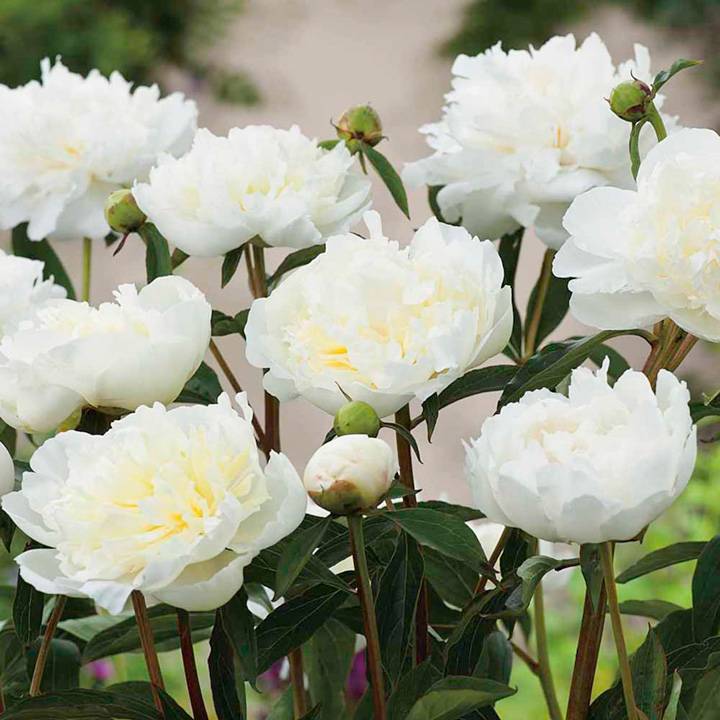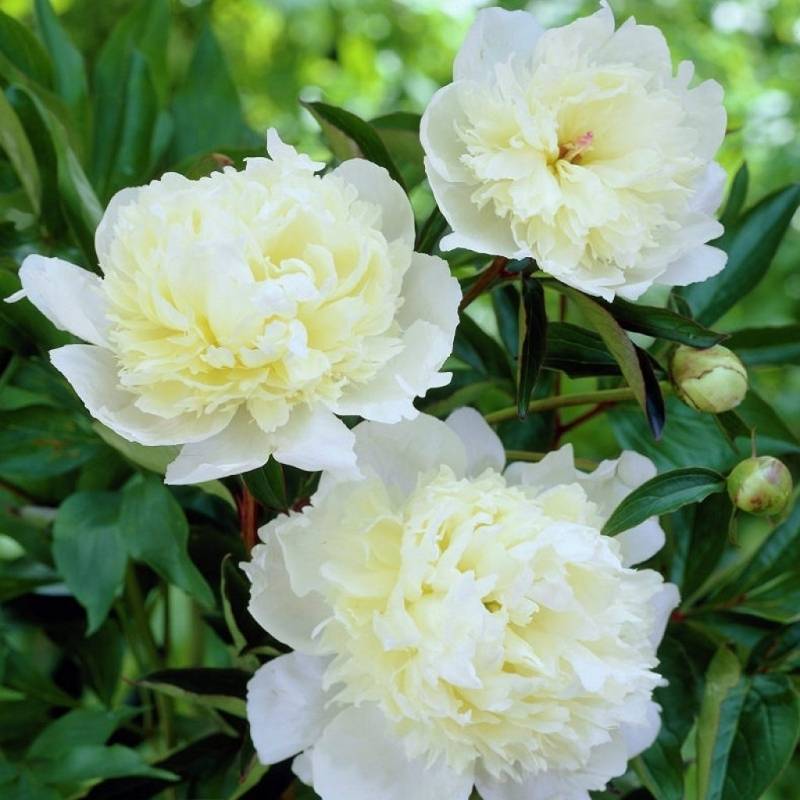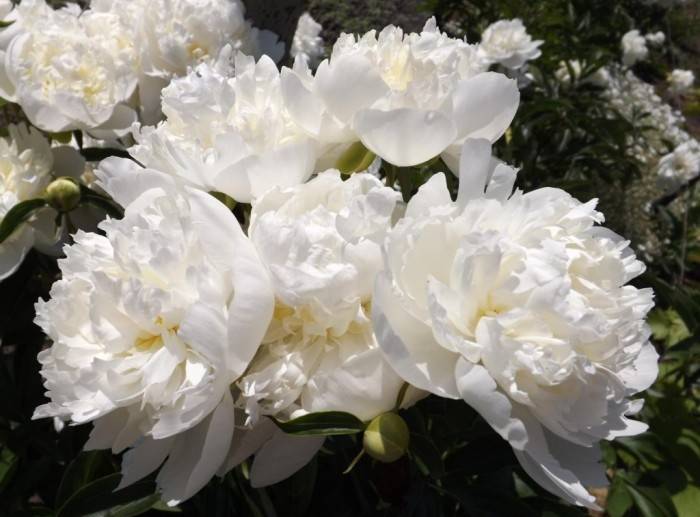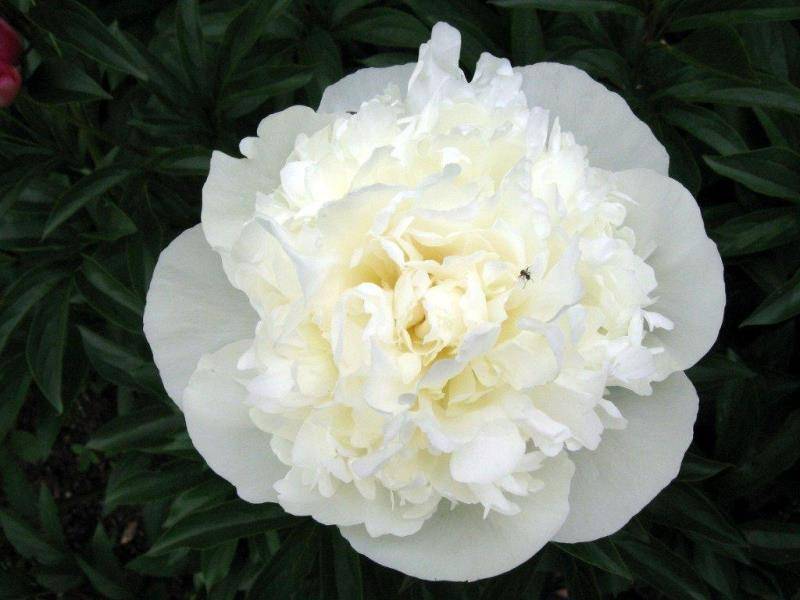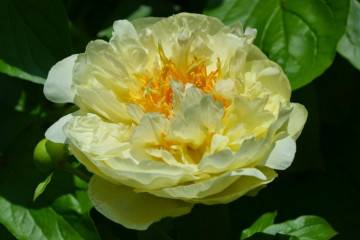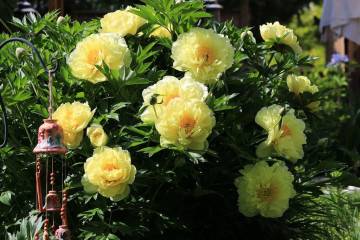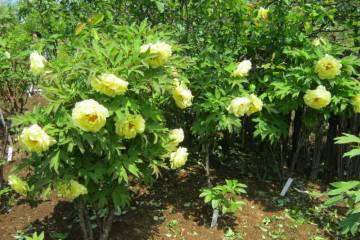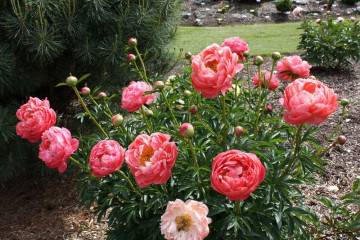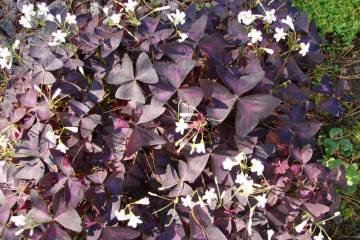Peony Duchesse de Nemours - growing varieties in the garden
Content:
The peony is one of the gardeners' favorites among perennials for the garden. Peonies are presented in a large assortment of varieties. Among them, a representative of the French selection - the peony Duchesse de Nemours - occupies a worthy place. He deservedly belongs to the most demanded varieties.
Peony Duchesse de Nemours: a short description and characteristics of the variety
Paeonia Duchesse de Nemours was created by the French breeder F. Calot in 1856. The variety can be safely called the standard of selection among peonies. Due to its beauty, Duchesse de Nemours was named after one of the most beautiful women of her time, the Duchess de Nemours. This variety with a romantic name became a favorite and popular first in France.
Today it is one of the best-selling varieties in Europe, especially in the Netherlands. In Russia, this variety has also been appreciated for a long time and is successfully grown in the central part of the country, and in the Urals, and even more so in the southern regions. The variety belongs to the 4th climatic group.
The herbaceous peony Duchesse de Nemours belongs to the milky-flowered group. The bush is medium-sized (up to 1 m high) with powerful tubers and strong shoots. The leaves are openwork, dissected with a bright green hue in summer and crimson in autumn. The lush and voluminous bush retains its decorative effect even after the end of the flowering period.
Peony blooms are very spectacular. Duchesse de Nemours delights with exquisite, double, globular inflorescences. The flowering period of the Duchess de Nemours peony is medium late. The sophisticated flowers have a delicate milky white color. In the center, the inflorescence has a soft yellow or cream color, which gradually turns white and towards the periphery it becomes absolutely snow-white. One gets the feeling that he seems to be glowing from the inside. The surface of the petals is smooth. The size of the inflorescences can reach up to 20 cm in diameter.
Peony Duchesse de Nemours comes from France, so it is not without reason that it is famous for its light refined aroma. Some people compare it with the scent of lily of the valley, others catch citrus notes. The aroma is especially pronounced in the evening.
The handsome peony Duchess is successfully used in landscape design. The elegant "Frenchman" looks equally great in single landings and in group compositions. The bushes seem to resemble snowdrifts in the garden. The bushes have the most lush flowering at 4-10 years of age. The variety is suitable both for private gardens and for decorating urban environments, especially parks.
The advantages of the variety:
- annual stable flowering;
- unpretentiousness to climatic conditions (recurrent frosts can damage the first and strongest buds, but this will not significantly affect further flowering);
- the bush grows very quickly;
- blooms profusely;
- flowers retain their decorative effect after rain;
- has an exquisite aroma;
- the variety is unpretentious in care;
- the peony has a powerful root system, the tubers are very strong;
- characterized by high frost resistance (up to −40 ° С);
- the variety is used to decorate the garden and cut;
- prized for endurance and durability;
- resistant to most fungal (gray mold) and bacterial diseases, unlike other varieties of peonies.
Disadvantages:
- relatively short flowering period;
- cut flowers do not last very long (a little over a week).
As you can see, the advantages of this variety significantly exceed the conventional disadvantages.
For the rapid development and abundant flowering of the bush, you must successfully choose a place. For the peony Duchesse de Nemours, a sunny area protected from strong winds is better. The bush can grow in partial shade. But the more sunlight the plant receives, the more lush the flowering will be. The shade completely blocks the flowering of the crop, so it is not advisable to plant bushes near spreading trees and in the shade of buildings.
It should also be borne in mind that when planting in a group, it is desirable to leave about 1 m or more between the plants. The optimal period for growing a bush in one place is up to 8 years. After 10 years, the flowering of the bush becomes less abundant.
Peony propagates most often in a vegetative way. The best planting material can be obtained from 3-4 year old bushes. After separation, the bushes bloom fully in the third or fourth year.
The optimal time for planting peonies is from mid-August to early September. During this period, the plant has time to adapt well to the coming winter. Peonies can be transplanted in spring, but in this case the plant is sick for a long time and does not bloom for the first years after planting.
The soil for planting should be nutritious, since the peony will grow in one place for a fairly long period. Peonies prefer fertile, loose soil, preferably clay-free.
Landing
Step by step procedure:
- The bush must be carefully dug out without damaging the roots. They are very fragile and break easily in peonies, so it is better to hold them for several hours in a shady place after digging so that they wilt slightly.
- You need to shake off the soil from the rhizome and divide it with a garden knife into several parts, each of which should have 3-5 well-developed buds and 3-4 roots.
- The roots are carefully examined, damaged and rotten areas are removed, the cuts are sprinkled with crushed charcoal or treated with a 1% solution of copper sulfate.
- The planting hole should be large and deep enough. Drainage is poured to the bottom, then 2/3 the hole is filled with earth and superphosphate is added. The optimal composition of the soil mixture: peat, humus, garden soil, sand. Garden soil is poured on top.
- During planting, the roots are gently straightened, filling the planting hole with prepared soil so that voids do not form. The soil is compacted.
- The plant is watered abundantly.
- The soil around the bush is mulched using peat or humus.
Further care
Caring for a peony Duchesse de Nemours consists of standard agricultural techniques.
- Watering. The bushes are watered, taking into account the weather conditions of the region. In dry summers, watering is done abundantly. It will be enough 2-3 buckets for one bush. It is desirable that the water for irrigation is warm. Most of all, the plant needs watering during the budding period, as well as during the laying of growth and flower buds. There is no need for watering during the rainy season.
- Loosening. The soil around the plant is loosened no deeper than 5 cm. Loosening is carried out mainly after rain to improve aeration.
- Mulching. Peat or humus is usually used for mulching. This agrotechnical technique allows you to improve the properties of the soil and maintain the necessary moisture. Mulching helps prevent weeds from overgrowing and drying out the soil.
- Top dressing. If a sufficient amount of fertilizer was applied when planting the plant, then feeding is not carried out for the first years.The first feeding is usually done in the spring in the third year after planting the bush. It is necessary to take a mullein solution, you can also add superphosphate (20 g) to it. The second necessary dressing for flowers is done after flowering in mid-July, adding phosphorus-potassium soluble fertilizer, since buds are laid, which ensure flowering for the next year. You can also feed peonies with wood ash in the amount of 300 g for each bush.
- Pruning. In young bushes in the early years, no more than one bud is left. This technique will allow the bush to gain strength. In adult specimens, all lateral shoots are cut to obtain large flowers. In the fall, after the first frost, the bush is cut off at the soil level. When using peonies for cutting on bushes, at least half of the stems must be left. This will allow the bush to bloom again fully and magnificently next year.
- Weeding. Young plants need regular weeding. Overgrown specimens, as a rule, do not allow weeds to spread.
- Preparing for winter. In the first year after planting for the winter, it is advisable to sprinkle young bushes with earth or sprinkle them with peat, humus or leaf litter. In early spring, the shelter is removed, since this variety is distinguished by early awakening. Adult plants do not need shelter, since they tolerate weather anomalies very well. A layer of snow acts as a natural protection against frost.
- Preventive actions. In general, the Duchess de Nemours variety is quite resistant to most diseases characteristic of peonies. But for prevention, it is recommended to periodically treat with insecticides and fungicides.
What to do if the peony does not bloom
It happens that after planting the bush does not bloom for a long time. Possible reasons:
- the bush was planted in the spring;
- the bush grows in the shade (it lacks sunlight);
- the bush has been growing in one place for more than 8-10 years;
- insufficient content of nutrients in the soil.
If the bush was planted in spring, you will have to wait a little longer for flowering. In other cases, only transplanting the bush to a sunny place with good nutritious soil will help.
Peony Duchesse de Nemours is undoubtedly worthy to replenish the gardener's collection. He will delight over the years and will undoubtedly become a favorite.

